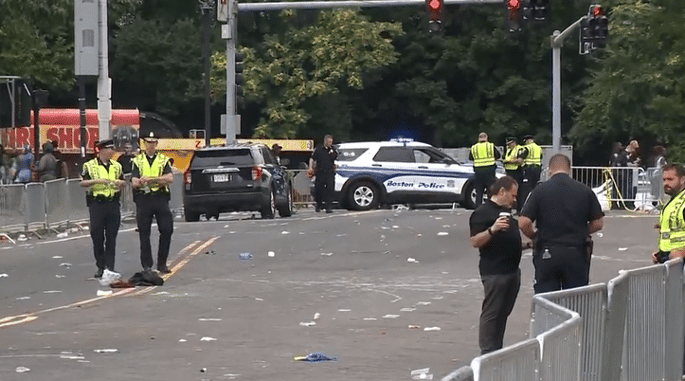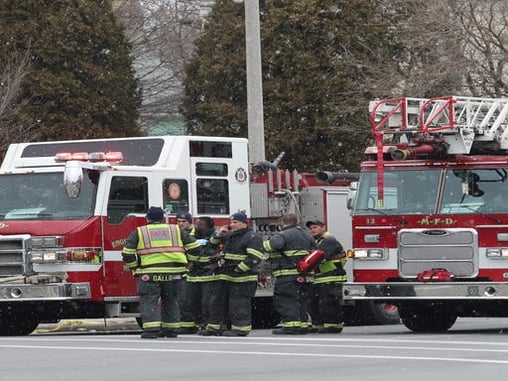Recently, we got an email recounting a defensive gun use situation and we’ll get into that a bit more in a future article. In this article, we’re going to tackle the that rough gray area of where drawing a firearm is warranted but no shots result and what you, as the concealed carrier, should consider after that happens.
State laws dictate a lot of the nuances of when drawing a firearm is considered justified versus brandishing or menacing.
We’re going to start with a clean binary situation.
Scenario: An armed robber draws a gun or weapon and intimates he’s going to use it, you draw your gun, and he flees. No shots are fired.
Should you call the police immediately and inform them of the situation? Sure. That’s a decent course of action.
However, here’s two factors you may want to consider before you call the police:
- Are you in a safe location?
- Are the other people around you aware of the action you took?
When ordinary people see a man drawing a gun, they may completely neglect to notice the other man who is also armed. For an outside observer, is it clear that you were justified and the other person was not?
When you report a crime to police, you let them know that an area is susceptible to violent crime. This is important for a number of reasons. It helps police make informed decisions about where they need to increase their presence. It helps give valuable data to local, state, and federal authorities so they can determine trends. It can also help exonerate you of any wrongdoing.
But here’s the part I’m going to stress: you need to make sure you are in a safe location first.
If you fear for your life so much that you are willing to draw your concealed carry handgun, you need to continue to protect yourself even after the attacker has supposedly fled the scene. This could be as simple as walking inside a nearby shop or other well-lit, visible location. In some cases, you may actually need to flee the scene entirely if you cannot be relatively certain you will be protected until police arrive.
Please do consider these factors.
Communicating with police is important but, above all else, you need to be safe and secure.
Now, there are more complicated situations that arise in reality where the gun owner may be panicked, scared, and his memory jumbled.
Let’s take a non-binary situation.
Scenario: You’re walking down the sidewalk and are accosted by some folks hanging out. You attempt to walk around them but two men get up from the stoop and begin following you. Some words are exchanged and, during that time, you feel threatened and your life may be at risk. One of the men demonstrates he has a gun and, given the circumstances, you feel it necessary to draw your concealed carry handgun so you can secure your exit. Bystanders see you draw your gun and they flee the scene. The men that were harassing you and threatening you withdraw. No shots are fired.
This is a more complex situation than the first scenario. It involves a number of different factors. However, from the first scenario, the first step you need to take is to get to a safe location.
Once you are at a safe location, you will likely still be pretty shaken up. This is why I personally advise you to call an attorney. He can provide legal counsel and assist you in talking with the police.
You still need to inform the police. But, in this sort of scenario, you should not stay at the scene where you felt your life was so threatened you needed to draw a gun to secure your exit.
In this sort of scenario, I highly recommend you speak to an attorney after you are in a secure location. Will that cost money? Yes.
If you talk to the police right after you had a traumatic experience, your perception of the sequence of events may be distorted. This can cause you to say things that aren’t true and muddle your statement that investigators will then use to determine if what you did was justified.
Failures, in the gun community, are expensive.
People lose their jobs, their homes, and even their right to possess firearms all because they did not take into consideration the full ramifications of their actions. They felt they were justified in their actions but were under extreme amounts of stress and incorrectly recounted their situations to police without legal counsel present.
Don’t get me wrong: you always need to talk to police after you use a gun in defense.
And a step in this process will, at some point, include a conversation with police. It doesn’t matter the situation nor the justification. Any use of a firearm against another party — even if no shots are fired — will need to be brought to their attention.
The way you go about it is up to you. I will always firmly recommend that the first call you make is to a defense attorney. He or she can talk you through the process, hear your story, and determine the best way to give that story to police.
At the end of the day, you know what you did to defend your life. Your life is worth it. That gun is helpful in securing your life. Carry every single day, everywhere, and always maintain situational awareness.
Disclaimer: The above are opinions of the author. In any situation dealing with self-defense, it is your responsibility to understand the laws in your area, and what you can and cannot legally do. It is also your responsibility to use your best judgement, given the situation that you may find yourself in. In no way should this information be viewed as legal advice. When in doubt, consult a lawyer for any clarification that you may require. Simply put, use your best judgement and always abide by the law.



![[VIDEO] AR-15 That Takes Glock Magazines](https://imagedelivery.net/sbm_lYeJbALkepJgtmRD5w/concealednation.org/2017/06/ScreenHunter_910-Jun.-28-10.23.jpg/w=728,h=381)










